Drive (2011): Anti-hero in Antagonist’s Universe
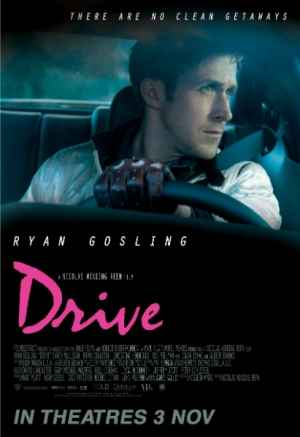
Many theorists and scholars who have studied the psychoanalytic traits of film production and criticism. One theory of psychoanalysis and feminism was produced by Laura Mulvey. It suggests that the female character is passive and represents the male character’s weaknesses. However, Gaylyn Studlar critiques both Mulvey and the position of the female in film.
She states that female characters are subjectified in order to become both subversive and matriarchal. Female characters, after being told where they belong, reflect upon and change their place in the world. 2011’s Drive, directed by Nicolas Winding Refn, contains many psychoanalytic aspects. The story centres on a character known simply as ‘Driver’ (Ryan Gosling). He fixes cars as a mechanic and crashes cars for Hollywood productions by day, and works as a getaway driver by night.
However, he falls for the charms of his next door neighbour Irene (Carey Mulligan). Every character in Drive falls into the symbolic order. However, Driver and Irene learn to escape the symbolic order together. Mulligan’s character fits Studlar’s subversive feminist character type. Driver believes that he can escape to lead a better life. Gosling’s character changes his life because of her strong personality and beauty.
She balances between protecting her family, including her incarcerated husband Standard (Oscar Isaac), and interacting with Driver. Comparing her to Drive‘s voyeuristic elements, she is an object for Driver to connect to and fall in love with. Drive relates to Christian Metz’s theory of unconsciousness. Metz believed that cinema is an infinite and replayed pursuit of the imaginary.(Murphy. 2005).
The main distinguishing factor is that the cinema is a signifier whose presence is absence. In particular, the act of perception takes place in real time, but the spectator is viewing an object which is pre-recorded and thus already absent: it is the object’s ‘replica in a new kind of mirror’ (Murphy. 2005). He believed cinema was a symptom of the unresolved entrance into the symbolic order (Appiganesi. 1995. p. 91).
Our unconsciousness can chart a understanding of what defines us and why we believe it. French theorist Jules Lacan defined the unconscious as being made up of signs, metaphors and symbols (Appiganesi et al. p. 88). The study of signs is made up of two definitive parts. The first is the signifier. The signifier is the director or character trying to get across a certain theme or symbol. The second part is the signified – referring to the person observing the film or the character becoming aware of their situation. Each sign has these two components.
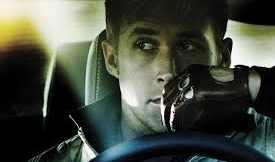
The Imaginary – Driver’s Existence
Drive contains many signs and symbols that illustrate the moral and mental dexterity of the characters. In Drive, the characters envision themselves as victims in the Los Angeles setting. Gosling’s character is very quiet, simply named ‘Driver’. His full name is not revealed, so that any personal connection with him is avoided and so he can remain a shadowy figure. His uniform is one of the few character traits he possesses. His scorpion jacket, brown gloves and toothpick give the character a distinctive look. The scorpion on his jacket is a metaphor for his personality. His identity changes from pensive to angry within seconds of being threatened.
The director becomes the signifier in this case. He chooses to keep Driver a closed-off character. The viewer is not allowed to know a lot of information about his character, with a very limited amount of dialogue throughout the film. His emotions are depicted through a limited range of facial expressions, a submissive character choosing to side with anyone needing his help. Once a lonely character, he believes that Irene is the person who can change him. Driver begins to change his attitude and stand up for himself.

Despite Irene’s tough conditions, she still treats Driver with respect, and sees something in him that he has not seen before. In his mind, her understanding of him places her in a greater position than the other people he regularly interacts with. Driver becomes the signified. He realizes that he is a tortured soul and submissive. This interaction depicts Irene as a strong female character. Both are bound together by absence and loss.
She is the motherly figure that Studlar suggests as the ideal female character type. She doesn’t consider her looks to be important, only her motherly relationship with her son Benicio. When she is in danger, Driver’s personality turns from submissive to dangerous. This transition is displayed with a literal change of identity. At one point, Driver puts a mask on to disguise himself whilst hunting down his enemy. This implies that his transformation from submissive to psychopathic has taken full effect.
The Symbolic Order – Driver’s Transition
Elements of the symbolic order include relationships, gender roles, rituals and language. The symbolic order constructs meaning and identity. Institutions, cultures and traditions are understood and undertaken depending on how every individual lives. (Mulvey. p. 16) The symbolic order is based on the realm of the father.
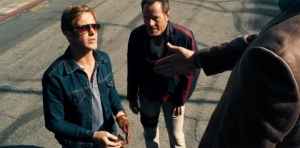
The other male characters become divided subjects, appearing unified and returning to the imagined unity. Drive contains many familial relationships between the characters. Irene, however, believes Driver is different to others in the symbolic order. She is the only person he knows that is positioned outside the symbolic order.
After Standard is released from prison, his connection to the mob soon puts Irene and Benicio in danger. Driver deems himself fit to help this family. Irene is able to lead this familial unit. Standard is the lesser of the two. Abused and beaten, he needs Driver’s getaway driving skills to complete one last assignment. Raising Benicio by herself and working a job whilst paying for a babysitter, Irene’s nature is what attracts Driver’s attention and good will.
Driver has a strong relationship with his employer Shannon (Bryan Cranston). He runs the auto repair shop where Driver works, finds getaway driving missions and Driver for the stunts for his day job. Driver ignores the many questionable parts of Shannon’s personality. Despite his indiscretions, Shannon cheerfully explains to Irene just how important Driver is. Their father-son like relationship is morally and financially beneficial. Along with the many car-related jobs in their lives, Shannon also wants Driver to become a professional race-car driver. He acts like a nice person, but seems to be using Driver for his skills. Shannon seeks to gain a financial investment from Bernie (Albert Brooks), a wealthy mobster with dangerous contacts.
“Mr. Rose, you put this kid behind the wheel, there’s nothing he can’t do.” Shannon says to Bernie. This establishes both the father-son connection between Shannon and Driver, and the submissive relationship Shannon has with someone of greater wealth and connections. In one scene, Bernie establishes himself as Driver’s new father figure. When meeting Driver for the first time, he stands at a higher position to prove his dominance over both him and Shannon.
Having dominion over his best friend Shannon, Driver may see Bernie almost like an untrustworthy uncle or stepfather. Bernie tries to consult with Driver about their current predicament. Driven by money, Bernie only sees fit to protect his investments, without gaining an emotional connection to anyone.
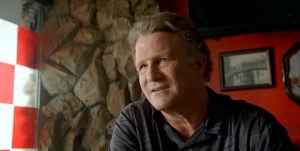
Bernie becomes parallel to Driver. Whereas Driver is fascinated by cars, Bernie is fond of murder. Both characters are driven by violence and are compelled to conclude this increasingly violent and life-threatening situation. Bernie has a familial relationship with his business partner and fellow mobster Nino. He seeks Nino’s consent and opinion whenever he feels it is needed.
Nino has accepted, however, that Bernie is in charge of the investments that they hold. Nino is an amoral mobster with his own desires and complaints. Nino attempts to steal from another mob, with Driver forced to be the getaway driver. When asked why, he says he did it because of the mob’s treatment of him. He says that they made fun of his Jewish heritage and still treated him like a child. In this familial structure, Nino has taken it upon itself to become independent. He has ignored his ‘family’ and had committed a crime to prove himself to Bernie.
The Real – Driver’s Vengeance
Christian Metz described the link between the unconscious and voyeurism. Viewing cinema involves emotional reactions such as pleasure and revulsion. (Mulvey. 1975. p. 20) We react strongly to characters, finding similarities and differences between ourselves and the characters on screen. The pleasure of looking is known as scopophilia.
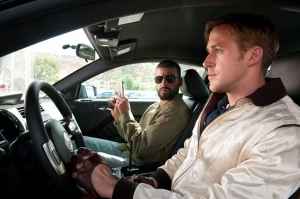
Driver demonstrates both his love for her and his desire to protect her at any cost. The film’s other female character, Blanche, is also a character that fits Mulvey’s theory. She joins Driver and Standard on their heist. When the heist goes wrong, Blanche and Driver hide from the people whose money was stolen. When Driver needs answers, he violently interrogates her. Driver’s treatment of Blanche, along with her sudden and violent death, signifies that she is both an alluring and submissive supporting character.
Examining the film using psychoanalytical theory reveals many underlying character traits and symbols. Driver’s personality drastically changes throughout the film. He realizes that he can look after people, and that the safety of innocent people should be his main concern.
At the beginning of the film, Driver is a submissive character that answers to many father figures. Shannon and Bernie, both older and more powerful, use Driver for his particular set of skills with no real care for his well-being. When studying the voyeuristic elements, it is noticeable that Driver and Irene are vulnerable. Driver comes to realise that Irene is his soul purpose beyond operating cars.
Irene is a female character that has characteristics of Mulvey and Studlar’s theories of feminism in the media. Irene is a strong matriarchal character who has accepted her place in the world. She focuses on her job and son, not using her looks to lure people in. Despite her husband’s behaviour, she is the most powerful person in her familial unit. She is both alluring and a target for dangerous people. Both Driver and Irene find each other, break away from the symbolic order and become greater people for doing so.
Works Cited
Disclaimer: Curtin University, 2013.
Appiganesi, R. et al. (1995). Postmodernism for Beginners. Cambridge: Icon. p. 88-101
Mulvey, L. (1975/1989). Visual Pleasure and Narrative Cinema. In Visual and Other Pleasures (pp. 14-21). London: Macmillan.
Murphy, P. (2005). A New Kind of Mirror. In Psychoanalysis and Film Theory Part 1. Vol. 2. Kritikos. http://intertheory.org/psychoanalysis.htm
Refn, N. W. (director). (2011). Drive [Motion Picture]. Hollywood, CA. FilmDistrict. 100 mins.
What do you think? Leave a comment.











I did think there were some weaknesses in the script that undermined things, especially in the second half of the film. In the opening scenes Gosling gives some mention to there being over 10 thousand roads in LA or something, and yet such are the coincidences the plot is reliant on, you’d think the city’s entire crime fraternity operated out of triangle formed between 1 auto garage, a pizzeria, and single a block of flats.
A brilliantly crafted update of the 70’s style pulp crime thriller, with some fine performances and ultra stylish flourishes (the first 10 mins are completely gripping).
I would suggest fans of Drive check out Walter Hills 1978 film, which is possibly the most distilled example of the genre, emotional noir minimalism and almost erotic in its driving sequences.
I can imagine the pitch:
– It’s like Luc Besson’s Taxi…
– So what?
– Well… it’s also like Luc Bessoin’s The Transporter?
– And?
– Well… that’s it really…
– Hm. We’ll pas…
– Wait – what if we shoe-horn in Ryan Gosling and give it airs and pretensions?
– Sold! And get a Brit in there, would ya?
I liked the piece and thought that your intro and run-through of psychoanalysis, as well as its application to the film, were very thorough. But I found that the essay took a long time to get to the film itself. Other than that, I thought it did a good job but could have used some connections to other films. But I can understand why you kept it focused.
I am a huge fan of this film. Lovely analysis!
Drive has some Lynchian moments but does not probe the unconscious potential of the violence and the cause of violence as well as Lynch does, by aligning sexuality with a drive to (male) violence that cannot be contained.
Ultimately, it’s style over substance. Not a bad film, just one lacking in enough weight to be a classic. It only furthers my opinion that Nicolas Winding Refn is a brilliant director, though.
Drive is a marvel for many reasons and overrides one’s unwillingness to suspend disbelief. Yes, I did wonder how the bodies were disposed of, why no one leapt to investigate shootings in a populated place. But this film is about a narrow subject–it doesn’t have the heft and dimension of, say, Mann’s Collateral.But so what?
I thought the film was gripping, the score bold, and I liked the radical left turn.
Drive is one of those movies that needs more than one viewing to really get it. It’s a simple story, but what makes it a great film is its visual storytelling. Almost every shot has a deeper meaning behind it than at first glance. Plus, I love the 80’s feel the film has.
Such a great film. Watching Driver’s transition from a submissive and silent character to an enforcer of sorts had a lot of shock value. This article did a great job at analyzing a lot of the symbolism and honestly, I might have to read this alongside watching the movie again. Great job!
I loved Drive. I thought of Ryan Gosling’s character – mysteriously known only as ‘The Driver’ – as a sort of modern-day superhero, who lives by his own moral code and travels from town to town righting wrongs and fighting for the good guys. For me, that explained the platonic relationship between him and Mulligan (a sort of Lois Lane/Superman or Mary Jane/Spiderman thing), and the ending… Great.
I think Refn finds himself in an interesting position; here is a fiercely talented technical filmmaker who has made a film almost vehemently devoid of substance.
“Drive” is certainly the most enjoyable film I’ve seen in a very, very long time.
For me films are about escapism. Real life is too often mundane and tedious.
The best stories are the most imaginative ones, with characters that are too extraordinary to ever exist in real life. Take the Lord of the Rings trilogy for instance. If Tolkien had been concerned about being convincing, he would never have been published, let alone have his novels adapted to film.
I absolutely, without reservation, loved Drive. Now this is the way to make a film.
Drive is a marvel for many reasons and overrides one’s unwillingness to suspend disbelief. Yes, I did wonder how the bodies were disposed of, why no one leapt to investigate shootings in a populated place. But this film is about a narrow subject–it doesn’t have the heft and dimension of, say, Mann’s Collateral.But so what?
Probablly the coolest film I’ve seen.
I’ve had 2 independent instances of women telling me I look a bit like Ryan Gosling recently.
That’s good right?
I really did enjoy this film, and also really enjoyed this article. Thanks!
The contrast between the seemingly emotionless automaton at the film’s start and the hellbent avenger at the film’s end is one of the most important points of the story.
The violence in this movie is wildly over the top, without adding much to it. I guess that makes it gratuitous. The hero comes across as a philosophy.
Drive is an excellent film. One of my favorites over the last few years… Love the application of psychoanalysis here. Also interesting how you reveal Driver to be a submissive character (despite his skills) who gradually becomes a protector and or non-submissive. Excellent piece.
Drive is one of the most tight and taut thrillers to come out in recent past.
Drive is one of the most tight and taut thrillers to come out in recent past. Period
This does touch upon Irene’s civilizing nature. Just a quick observation.